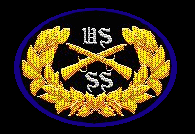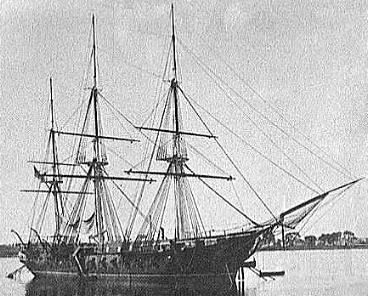

Chaplain Thomas G. Salter
USS Sabine Chaplain
Stroud's Civil War News Emporium is always interested in items relating to civil war era chaplains. (A particular interest, since the site's webmaster is a military chaplain himself.) Although it does not appear that Chaplain Thomas Salter actually saw duty during the war itself, 1866 found him in Navy uniform serving aboard the USS Sabine. Built in 1855, the Sabine was among the first of the older navy ships to see service in the Civil War. A sailing frigate with 1,726 tons' displacement, it carried a crew of 375 and was armed with two 10-inch Dahlgrens, ten 8-inch Dahlgrens, and eighteen 32-pounders. As an interesting historical note, in 1862, a substantial portion of the crew of the ironclad Monitor would come from volunteers from the Sabine.
It appears that Chaplain Salter recognized some inequity in the manner in which Naval officers were paid. He addresses it in a letter which has come into the possession of the Emporium. The actual manuscript reads as follows:
U.S. Ship Sabine
New London Connecti[cutt]
Jan.y 20th 1866
My Dear Mr. Marston
If, in the proposed Legislation in regard to increase of pay for the Navy, there should be no provision for paying staff officers according to their assimilated rank (i.e. Line officers & Staff officers of the same rank recieving [sic] the same pay) I wish you would be pleased to move an amendment to that end. It would be less than justice inasmuch as Line officers are educated at the expense of the govt and Staff officers at their own. I hope also you will advocate two kinds of pay (instead of three according to present Law) vis. Duty pay and Leave of absence or waiting orders pay -- dropping "shore pay" altogether. The Engineer Corps are now paid upon that principle and it is the general wish of Navy officers that this principle should be adopted in any new pay bill.
Very truly and respectfully yours,
Thomas G. Salter
Chaplain, U.S.N.
During the War Between the States, the USS Sabine saw fairly typical military duty. In November of 1862, the Sabine was dispatched to find the extremely successful Confederate raider, the CSS Alabama. The Sabine spent four months patrolling the shipping lanes just south of Long Island, protecting vessels bound to and from New York. The crew then embarked on a much longer journey. In February of 1863, the Sabine was sent to the Cape Verde Islands off the coast of Africa. It was rumored that the Alabama was in these waters. The ship sailed as far south as the Cape of Good Hope, searching in vain for Confederate raiders. After several months, the Sabine returned to America. In August, it was sent to patrol the waters off of New England, protecting and assisting commerce vessels.
It would be interesting to know if Chaplain Salter received a response to his missive. It should be noted that although the American military has had chaplains in its ranks from the very outset of the Revolutionary War, determining precisely how these "visible reminders of the holy" should function within combat ranks has not always been agreed upon.
